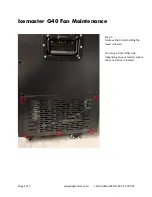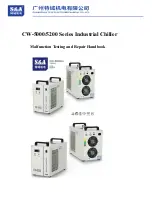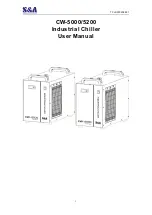
13
JOHNSON CONTROLS
FORM 201.21-NM4 (1020)
13
JOHNSON CONTROLS
2
An integral liquid cooled, transistorized, PWM, Variable
Speed Drive (VSD) is controlled by the chiller micro-
processor control panel to start/stop, select compressors
to run, and select compressor speed. Power Factor is
95% at part or full load.
The chiller microprocessor communicates with the VSD
Logic Board via a 3-wire RS-485 opto coupled data link.
The VSD Logic Board runs the number of compressors
required to meet the load and the compressors to the
speed requested by the chiller microprocessor.
The basic system control architecture is shown in the
diagram below:
The chiller is designed to operate in ambient tempera-
tures of 0°F to 125°F (-18°C to 52°C). Capacity control
is capable of reducing chiller capacity to 10% of full
load without the need for hot gas bypass.
Compressor
The direct drive semi-hermetic rotary twin-screw MTS
compressor is designed for industrial refrigeration ap-
plications and ensures high operational efficiencies and
reliable performance. Capacity control is achieved by
stepless VSD speed changes. No slide valve is required.
Smooth capacity control is achieved between 10%
and 100% of chiller capacity in most operating condi-
tions. The compressor is a positive displacement type
characterized by two helically grooved rotors, which
are manufactured from forged steel. The 4 pole motor
operates at speeds up to 6000 RPM to direct drive the
male rotor, which in turn drives the female rotor on a
light film of oil.
CHILLER CONTROL SYSTEM
INPUTS
COMMUNICATIONS
OUTPUTS
VSD
MOTOR
CONTROL
PANEL
Pressure Transducers
Temperature Sensors
Level Sensor
Switches
Liquid Flow
High Pressure
Start/Stop
Customer Supplied
Contacts
(Chiller Control
Board)
Microprocessor
User Interface
Display
&
Keypad
Building Automation
Printer
Modem
VSD Logic Board
SCR Trigger Board
Power Components
PWM (Speed Control)
(Relay Output
Board)
Solenoids
Contactors
Alarm
Pump
Compressor Heater
Run Status
Evap Heater
Refrigerant gas is injected into the void created by the
un-meshing of the five lobed male and seven lobed fe
-
male rotor. Further meshing of the rotors closes the rotor
threads to the suction port and progressively compresses
the gas in an axial direction to the discharge port. The
gas is compressed in volume and increased in pressure
before exiting at a designed volume at the discharge end
of the rotor casing. Since the intake and discharge cycles
overlap, a resulting smooth flow of gas is maintained.
The rotors are housed in a cast iron compressor hous-
ing precision machined to provide optimal clearances
for the rotors. Contact between the male and female
rotor is primarily rolling on a contact band on each of
the rotor’s pitch circle. This results in virtually no rotor
wear and increased reliability, a trademark of the screw
compressor.
The MTS compressor incorporates a complete anti-
friction bearing design for reduced power input and
increased reliability. Separated, cylindrical, roller bear-
ings handle radial loads. Angular-contact ball bearings
handle axial loads. Together they maintain accurate rotor
positioning at all pressure ratios, thereby minimizing
leakage and maintaining efficiency.
LD10478
LD10481
LD10482














































